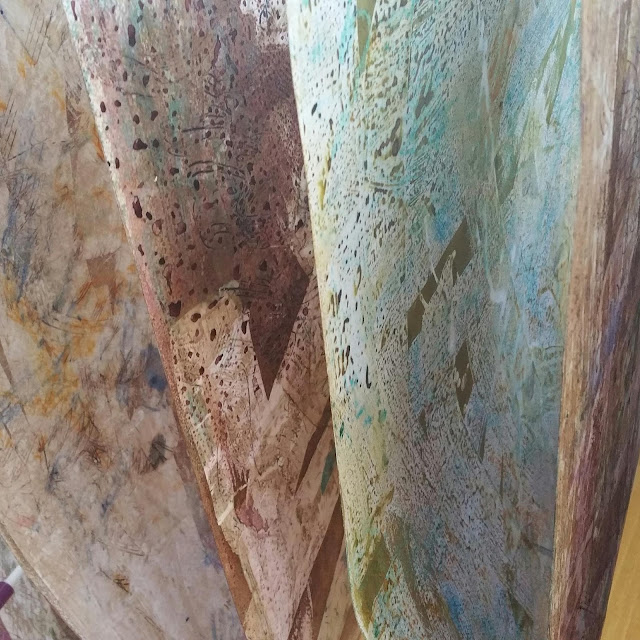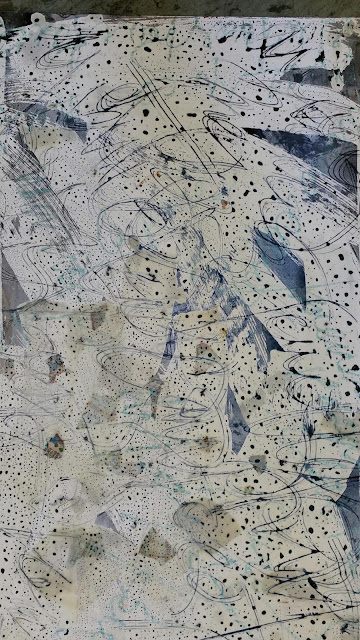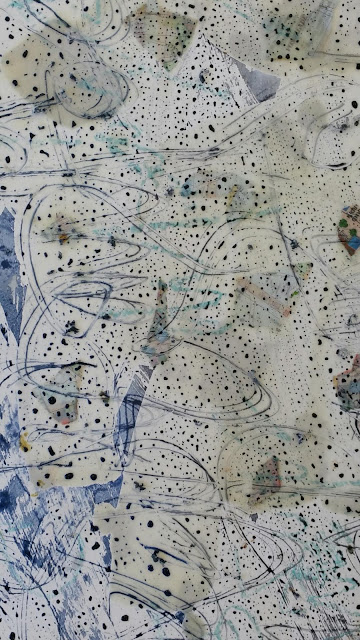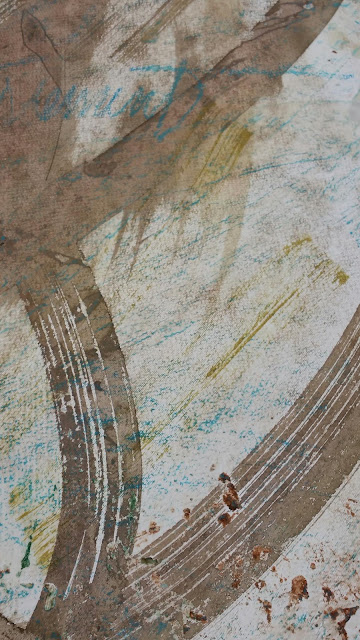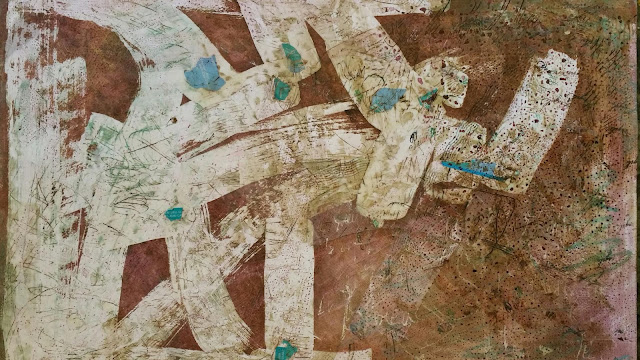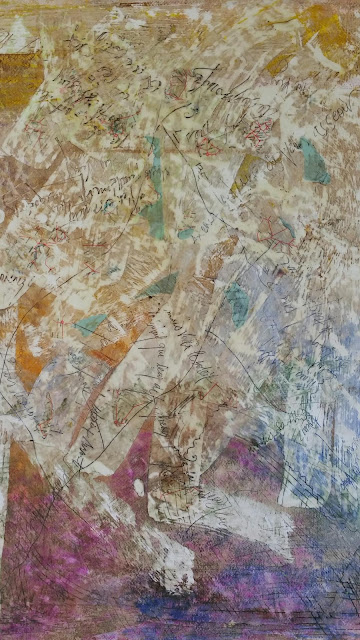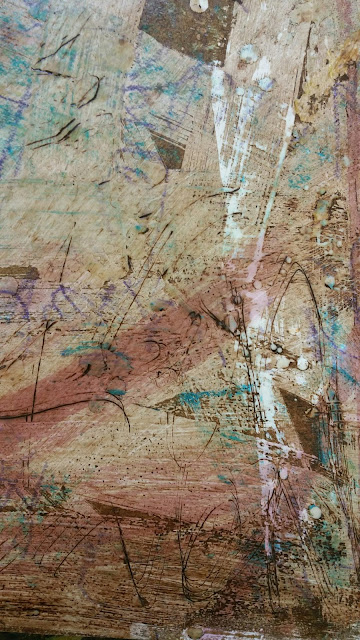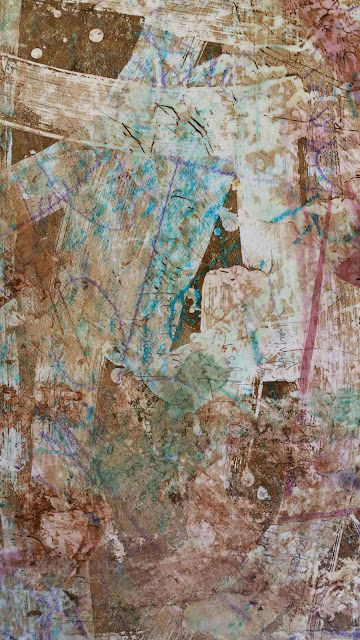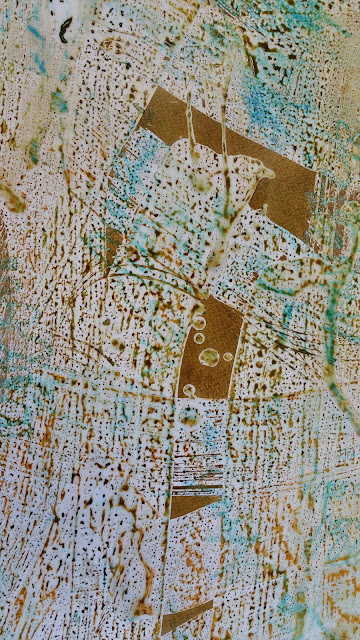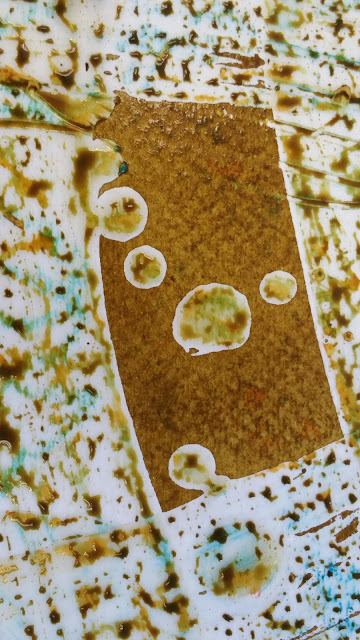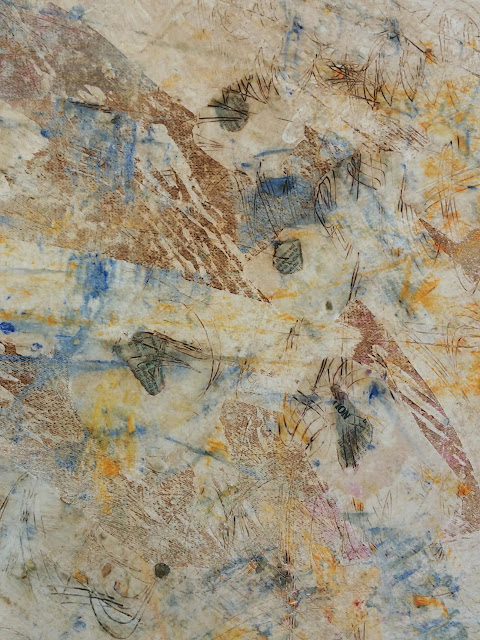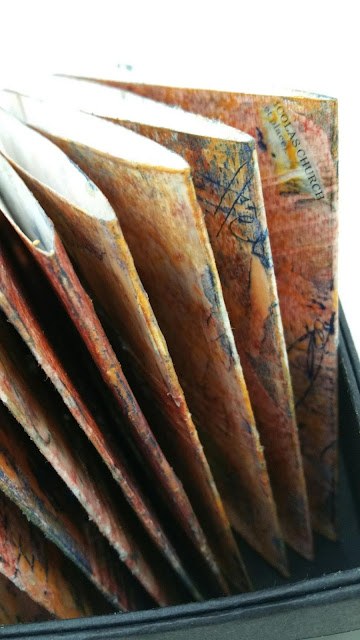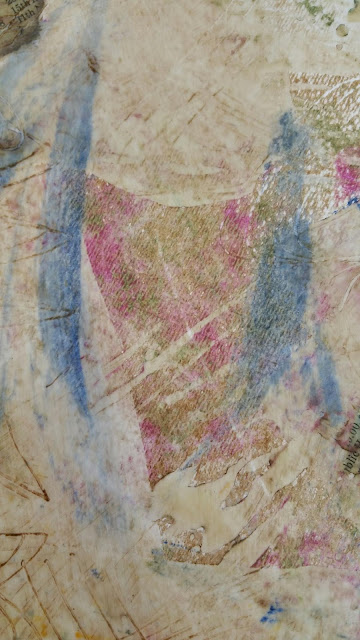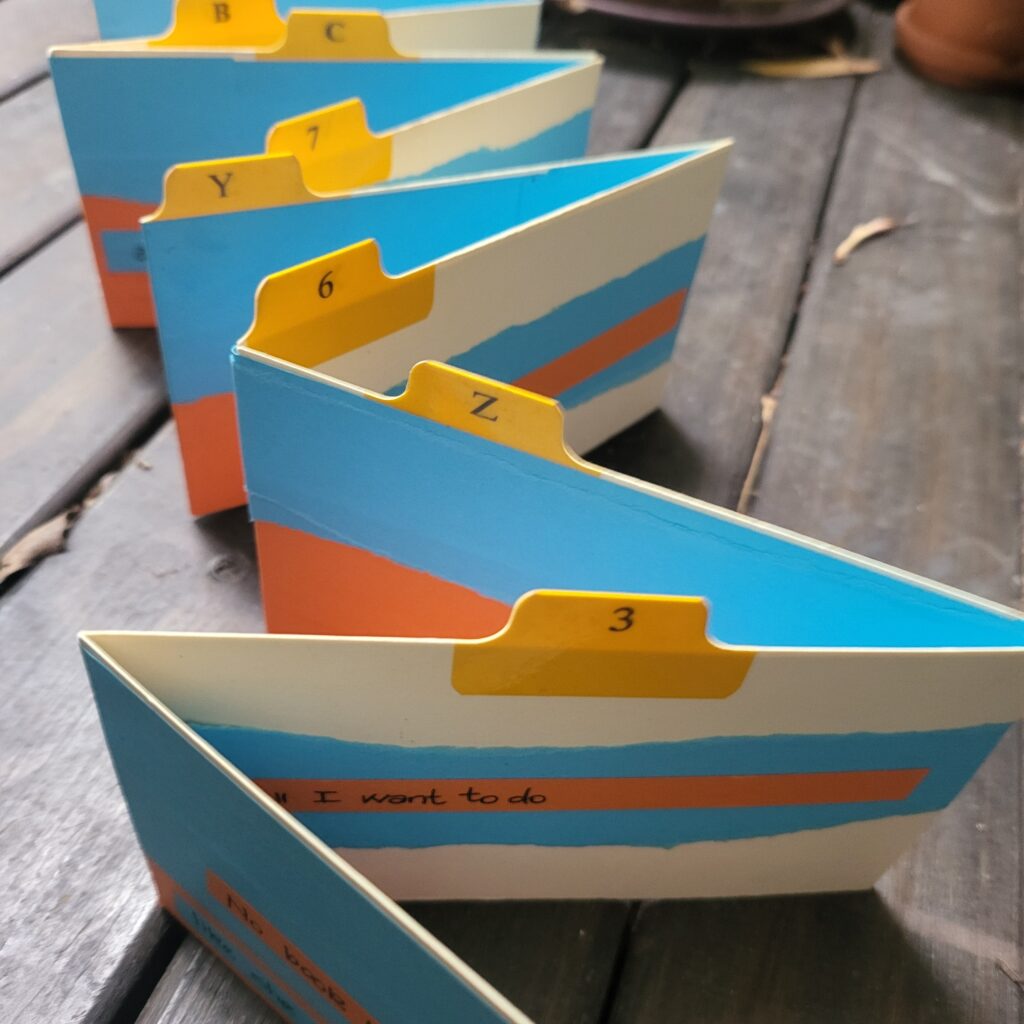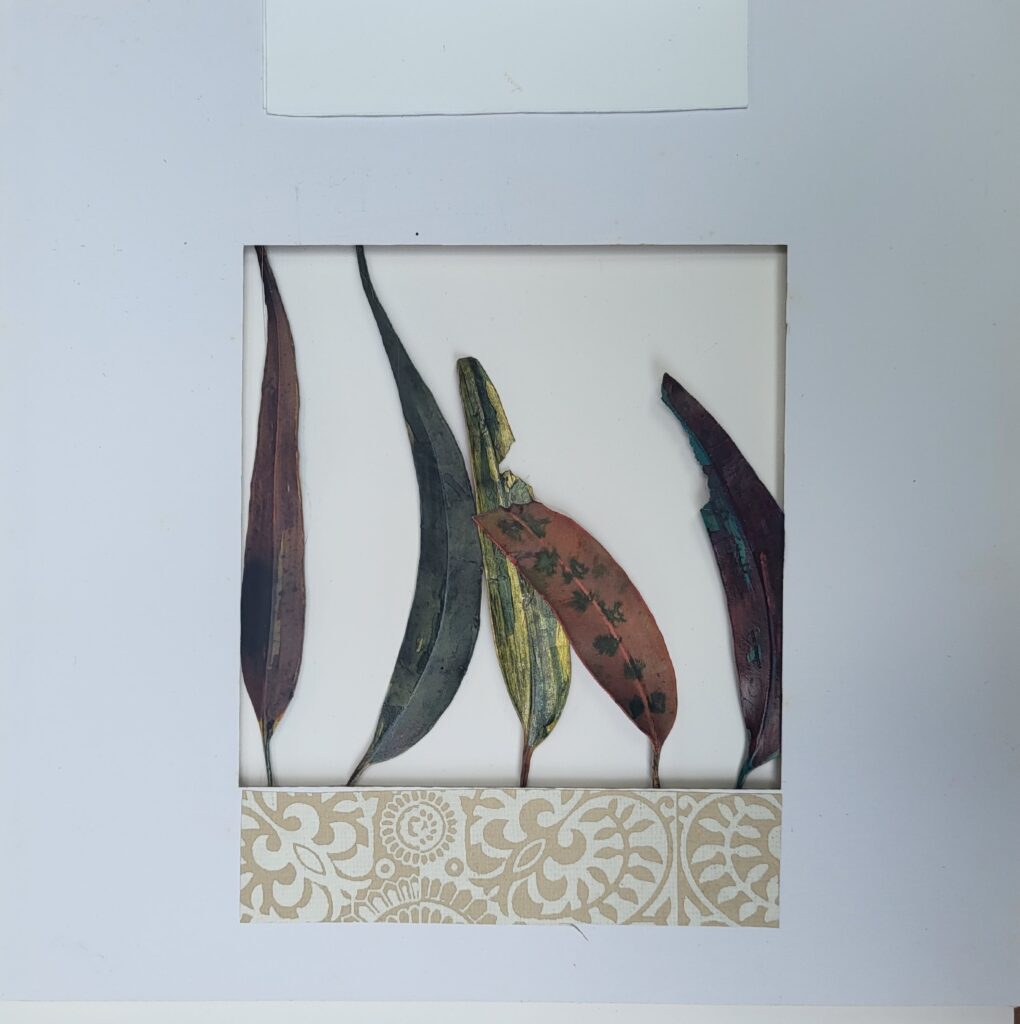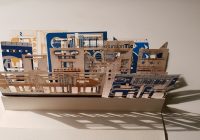Working with beeswax/encaustic over the last two days.
Here’s a process I’ve come up with. So I remember!
Here’s a process I’ve come up with. So I remember!
- Start with white (because you can always scrape back, and because it means there’s light in the layers)
- A layer of beeswax – keep the imperfections they give texture. Leave some parts “nude”. Can layer in a few bits of map or paper. Smaller pieces – say 1cm sq are enough. These often come off later, so go light on.
- Let it dry
- Scratch in if you want
- Put a layer of well diluted ink. This will soak into the nude bits. Leave it on for say 10 mins to get an animal print texture. Wipe off if not. Leave it on overnight if you want it to dry and it gives a great crocodile-ish texture
- Scratch into the wax
- Do a layer of oil paint so it goes into the scratches, use turps to lighten it
- Scrape back with a paint scraper to bring back the light
- Repeat till satisfied
Variations
- Write with oil pastel first light colors work best
- As long as you have a mostly white ground you can always bring back the light.
- There are bubbles in the wax which the ink finds. Try scraping back a little before inking maybe there will be more bubbles?
- Go right to the edge of you’re making a book from this!
- Great texture and depth to the piece with so little work.
Materials list:
- hot plate (lowest power, lowest degrees)
- saucepan
- a brush I can bear to part with which will be ruined by the wax
- a brush for ink / paint – maybe the stamping brush would be a good idea
- scratching tools: forks, knives, paint scrapers, metal skewer, the wooden sushi paddle, screwdrivers, scissors. Paint scrapers work best, but I broke them so maybe get some more
- oil paints
- turps
- damar varnish
- beeswax
- inks
- paper towel and a polishing rag or two
- papers – blank creme or white work best – unless old works are very light, they’ll not have enough light to get the ivory look at the end

